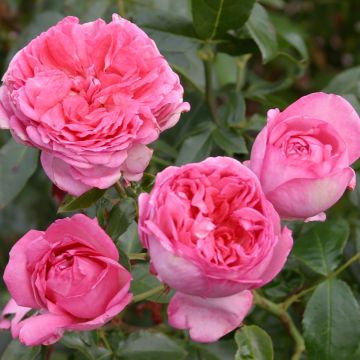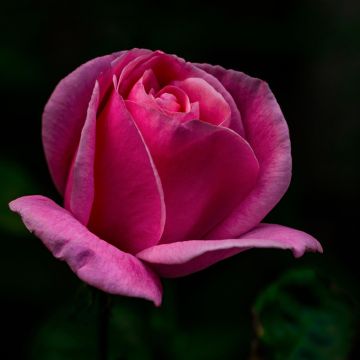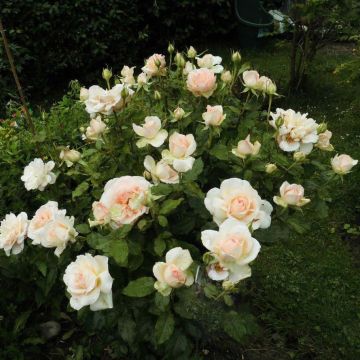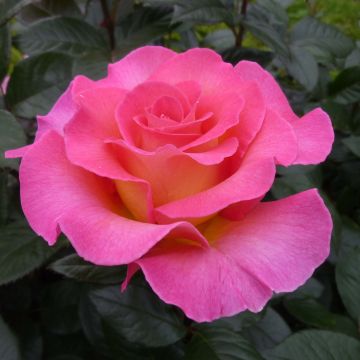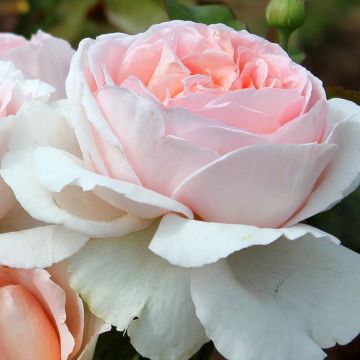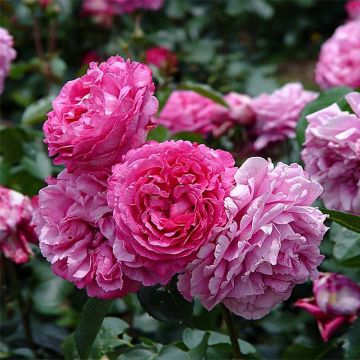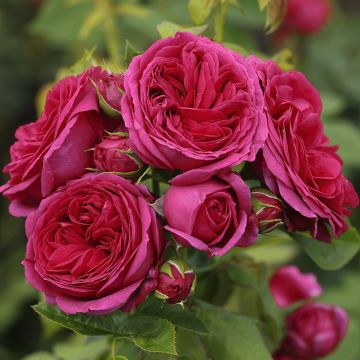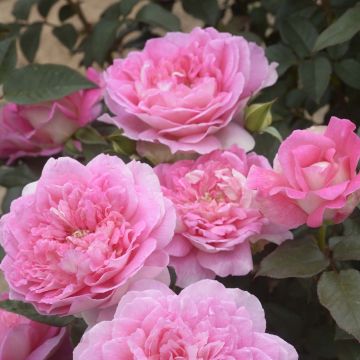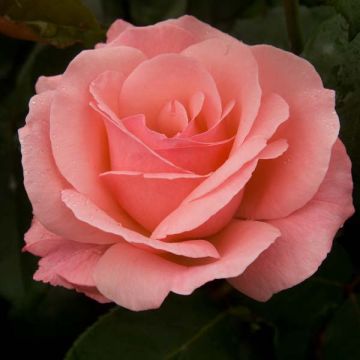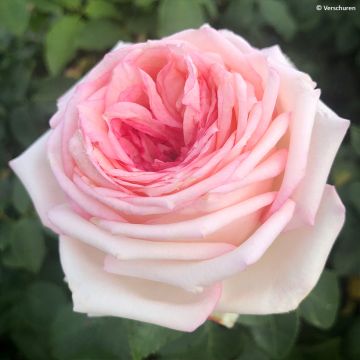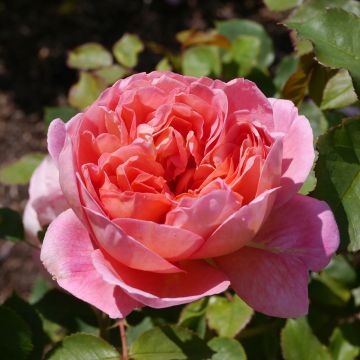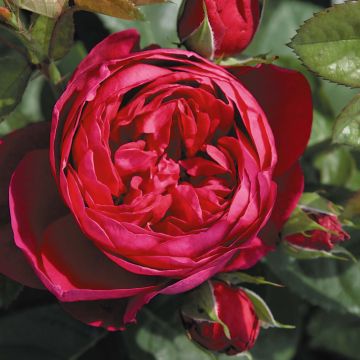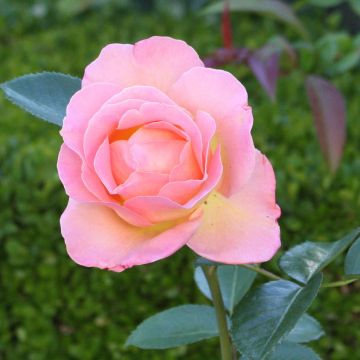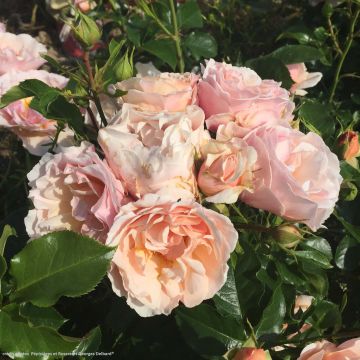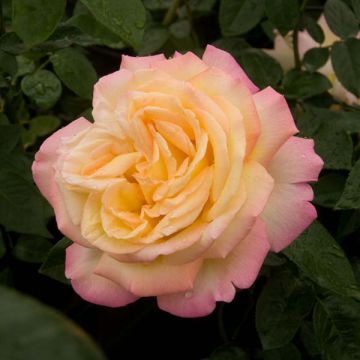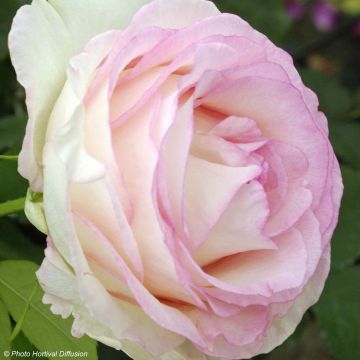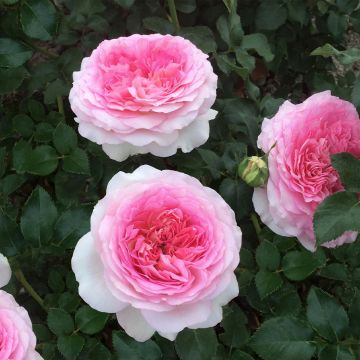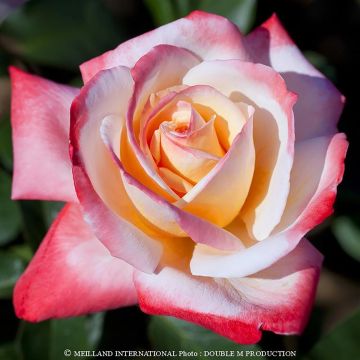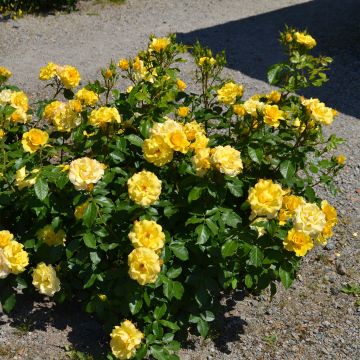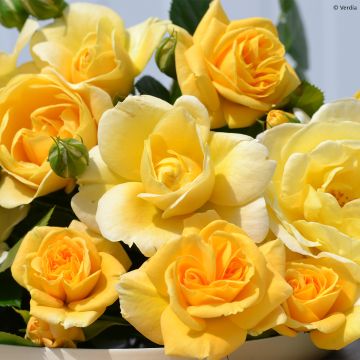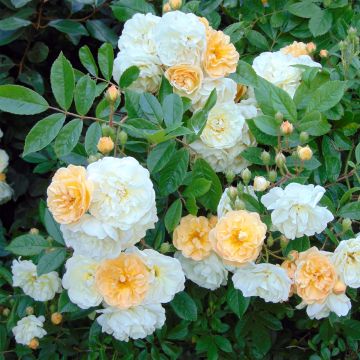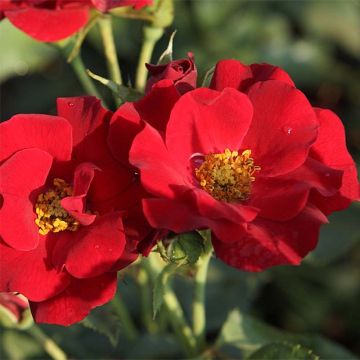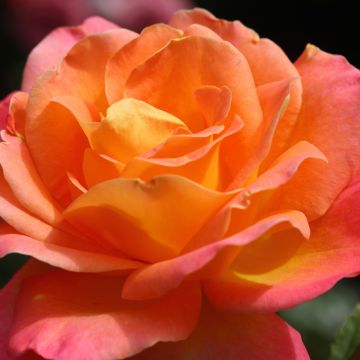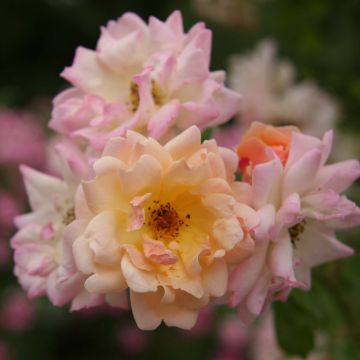Shipping country and language
Your country of residence may be:
Your country of residence is:
For a better user experience on our website, you can select:
Your shipping country:
Andorra
Austria
Belgium
Bulgaria
Canada
Chile
Croatia
Cyprus
Czechia
Denmark
Estonia
Finland
France
Germany
Greece
Hungary
Iceland
Ireland
Italy
Latvia
Lithuania
Luxembourg
Malta
Monaco
Netherlands
Poland
Portugal
Romania
Slovakia
Slovenia
Spain
Sweden
Switzerland
United Kingdom
We only deliver seed and bulb products to your country. If you add other products to your basket, they cannot be shipped.
Language:
French
German
Spanish
English
My Account
Hello
My wish lists
Plantfit
Log in / Register
Existing customer?
New customer?
Create an account to track your orders, access our customer service and, if you wish, make the most of our upcoming offers.
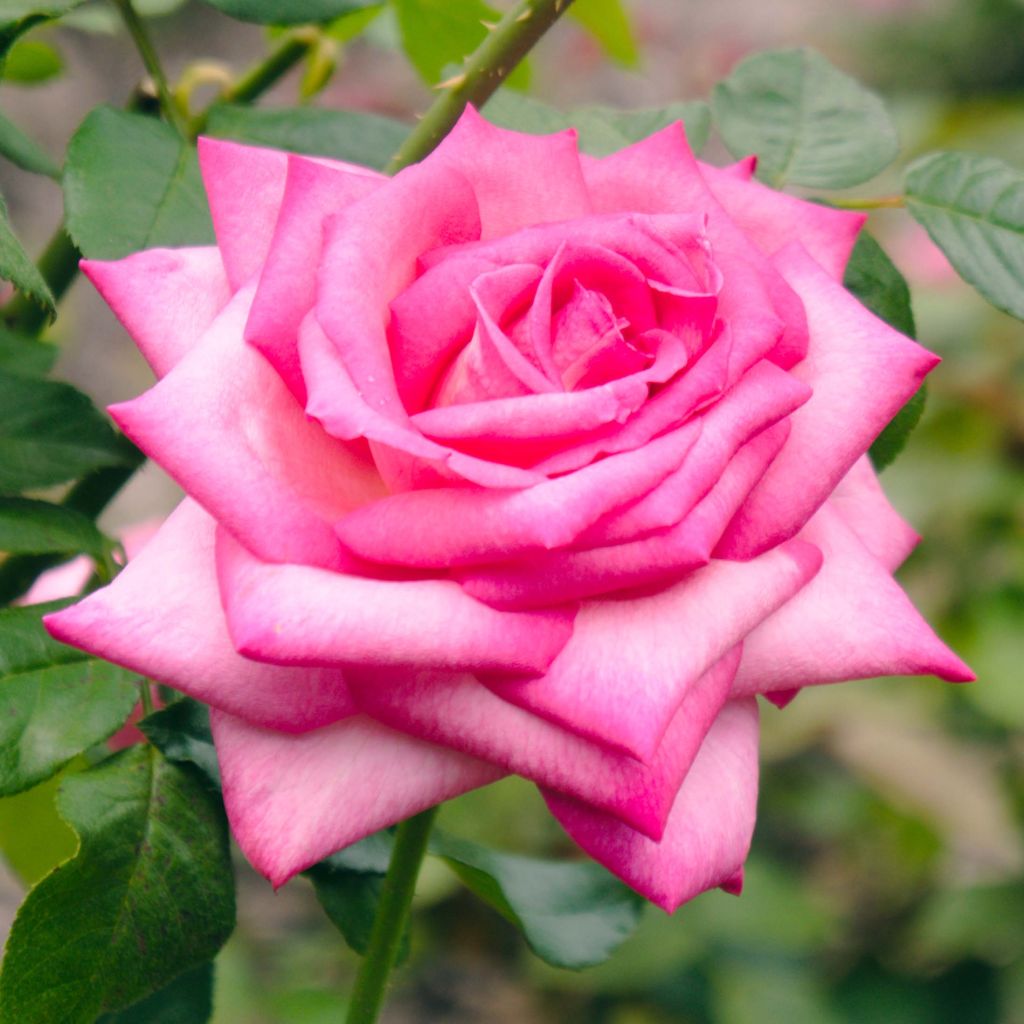

Rosa Wedding Bells
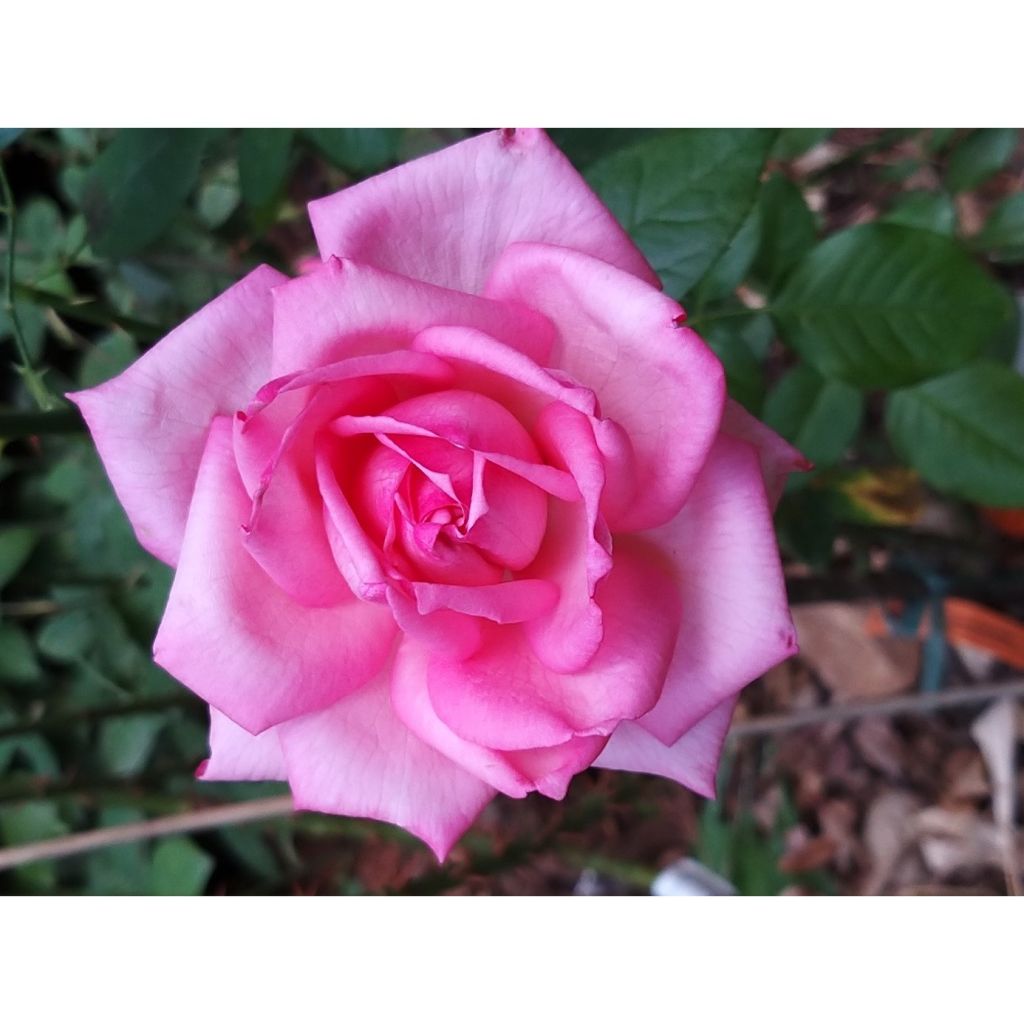

Rosa Wedding Bells
View more pictures
Hide images

Thierry P.

Floraison de septembre - image 3
Thierry P. • 84 FR
Rosa Wedding Bells
Rosa Wedding Bells ® 'Korsteflali'
The young plant received as a replacement for the Pernille Poulsen variety (insufficient quality) has foliage covered with rust and Marsonia. With care, I believe it should still recover. Let's meet in spring for another autopsy. This is the opinion of a rose enthusiast who has successfully planted over 270 different varieties in their garden. Please note that "autopsy" is a literal translation of "autopsie" and may not be the most appropriate term in this context. You may consider using "inspection" or "examination" instead. Additionally, please review the translation for any potential errors or improvements.
Thierry P., 02/11/2018
Why not try an alternative variety in stock?
View all →Order in the next for dispatch today!
Dispatch by letter from €3.90.
Delivery charge from €5.90 Oversize package delivery charge from €6.90.
More information
This item is not available in your country.
Schedule delivery date,
and select date in basket
This plant carries a 24 months recovery warranty
More information
We guarantee the quality of our plants for a full growing cycle, and will replace at our expense any plant that fails to recover under normal climatic and planting conditions.
From €5.90 for pickup delivery and €6.90 for home delivery
Express home delivery from €8.90.
From €5.90 for pickup delivery and €6.90 for home delivery
Express home delivery from €8.90.
Does this plant fit my garden?
Set up your Plantfit profile →
Description
Rosa Wedding Bells is a modern variety. It is classic and remarkably chic. It has exceptional health for a hybrid tea rose. Its large turbinate roses are perfectly formed, retaining multiple petals in a rare colour of pink with silver reflections. Its floral scent is classic and pleasant. It flowers generously from May to October, on long and sturdy stems adorned with equally elegant, dark green and satin foliage. Its flowers are sublime in bouquets.
Modern roses are often criticised for being stiff and susceptible to diseases. Rosa Wedding Bells, however, stands out with its good disease resistance, vigour, and the perfection of its delicately scented large roses. This modern hybrid tea rose from the ELEGANZA series was registered in 2010 by the German rose breeder Kordes, who specialises in naturally healthy varieties, without the need for phytosanitary treatments. It forms a small bushy and upright shrub. It has a rapid growth rate. It will reach a height of about 75cm (30in) with a spread of 50 to 60cm (20 to 24in). From May-June to September-October, it produces beautiful modern roses with a turbinate shape, measuring 10 to 12cm (4 to 5in) wide. The solitary blooms are carried by long, sturdy, and thorny stems. The petals have a pure pink colour, delicately touched with silver reflections. Their scent is fresh and floral when blooming, revealing bitter and earthy notes of myrtle, incense, and patchouli in the heat of the day, especially at noon and in the evening.
With its vigour, perfect roses, sophisticated style, and exceptional colour, Rosa Wedding Bells is undeniably a beautiful variety for cut flowers. It will easily find its place in the garden in a large rose bed, in combination with red roses like Eric Tabarly and Cherry Lady, white roses like Fée des Neiges, or mauve roses like Blue Girl. It works well in a mixed hedge, or even as a standalone plant in a well-maintained garden. It adapts well to all climates and to all soils that are not too dry. It pairs perfectly with pretty and easy-to-grow perennials such as geraniums, bellflowers, foxgloves, or even grasses in a very innovative style.
Rosa Wedding Bells in pictures
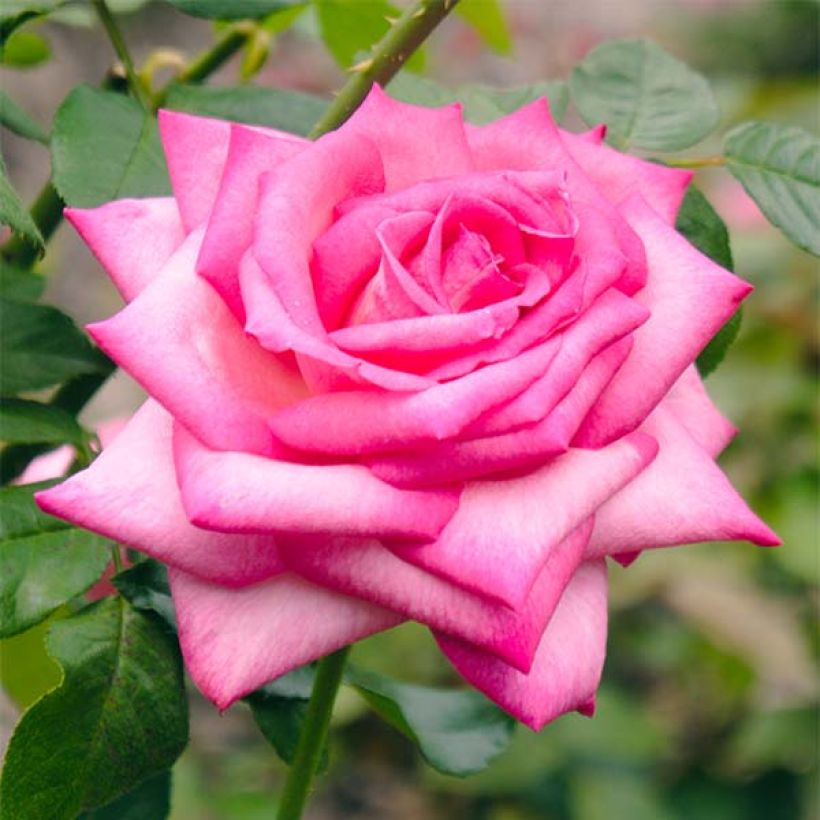

Plant habit
Flowering
Foliage
Botanical data
Rosa
Wedding Bells ® 'Korsteflali'
Rosaceae
Cultivar or hybrid
Rosa canina Laxa (Wrapped bare root, 4L/5L pot)
Other Large-flower tea Roses
Planting and care
Work the soil to a depth of 25cm (10in) by crumbling the soil. Add fertiliser to the bottom of the planting hole (dried blood or dehydrated horn, for example). Position your plant in the ground, removed from its pot. Cover the top of the root ball with 3cm (1in) of soil. Fill in the hole and water generously to remove any air pockets. In dry weather, water regularly for a few weeks to facilitate root growth. Provide your rose with special rose fertiliser that stimulates flowering.
Rosa Wedding Bells should not lack food or water.
Planting period
Intended location
Care
- , onOrder confirmed
Reply from on Promesse de fleurs
Roses by purpose
Haven't found what you were looking for?
Hardiness is the lowest winter temperature a plant can endure without suffering serious damage or even dying. However, hardiness is affected by location (a sheltered area, such as a patio), protection (winter cover) and soil type (hardiness is improved by well-drained soil).

Photo Sharing Terms & Conditions
In order to encourage gardeners to interact and share their experiences, Promesse de fleurs offers various media enabling content to be uploaded onto its Site - in particular via the ‘Photo sharing’ module.
The User agrees to refrain from:
- Posting any content that is illegal, prejudicial, insulting, racist, inciteful to hatred, revisionist, contrary to public decency, that infringes on privacy or on the privacy rights of third parties, in particular the publicity rights of persons and goods, intellectual property rights, or the right to privacy.
- Submitting content on behalf of a third party;
- Impersonate the identity of a third party and/or publish any personal information about a third party;
In general, the User undertakes to refrain from any unethical behaviour.
All Content (in particular text, comments, files, images, photos, videos, creative works, etc.), which may be subject to property or intellectual property rights, image or other private rights, shall remain the property of the User, subject to the limited rights granted by the terms of the licence granted by Promesse de fleurs as stated below. Users are at liberty to publish or not to publish such Content on the Site, notably via the ‘Photo Sharing’ facility, and accept that this Content shall be made public and freely accessible, notably on the Internet.
Users further acknowledge, undertake to have ,and guarantee that they hold all necessary rights and permissions to publish such material on the Site, in particular with regard to the legislation in force pertaining to any privacy, property, intellectual property, image, or contractual rights, or rights of any other nature. By publishing such Content on the Site, Users acknowledge accepting full liability as publishers of the Content within the meaning of the law, and grant Promesse de fleurs, free of charge, an inclusive, worldwide licence for the said Content for the entire duration of its publication, including all reproduction, representation, up/downloading, displaying, performing, transmission, and storage rights.
Users also grant permission for their name to be linked to the Content and accept that this link may not always be made available.
By engaging in posting material, Users consent to their Content becoming automatically accessible on the Internet, in particular on other sites and/or blogs and/or web pages of the Promesse de fleurs site, including in particular social pages and the Promesse de fleurs catalogue.
Users may secure the removal of entrusted content free of charge by issuing a simple request via our contact form.
The flowering period indicated on our website applies to countries and regions located in USDA zone 8 (France, the United Kingdom, Ireland, the Netherlands, etc.)
It will vary according to where you live:
- In zones 9 to 10 (Italy, Spain, Greece, etc.), flowering will occur about 2 to 4 weeks earlier.
- In zones 6 to 7 (Germany, Poland, Slovenia, and lower mountainous regions), flowering will be delayed by 2 to 3 weeks.
- In zone 5 (Central Europe, Scandinavia), blooming will be delayed by 3 to 5 weeks.
In temperate climates, pruning of spring-flowering shrubs (forsythia, spireas, etc.) should be done just after flowering.
Pruning of summer-flowering shrubs (Indian Lilac, Perovskia, etc.) can be done in winter or spring.
In cold regions as well as with frost-sensitive plants, avoid pruning too early when severe frosts may still occur.
The planting period indicated on our website applies to countries and regions located in USDA zone 8 (France, United Kingdom, Ireland, Netherlands).
It will vary according to where you live:
- In Mediterranean zones (Marseille, Madrid, Milan, etc.), autumn and winter are the best planting periods.
- In continental zones (Strasbourg, Munich, Vienna, etc.), delay planting by 2 to 3 weeks in spring and bring it forward by 2 to 4 weeks in autumn.
- In mountainous regions (the Alps, Pyrenees, Carpathians, etc.), it is best to plant in late spring (May-June) or late summer (August-September).
The harvesting period indicated on our website applies to countries and regions in USDA zone 8 (France, England, Ireland, the Netherlands).
In colder areas (Scandinavia, Poland, Austria...) fruit and vegetable harvests are likely to be delayed by 3-4 weeks.
In warmer areas (Italy, Spain, Greece, etc.), harvesting will probably take place earlier, depending on weather conditions.
The sowing periods indicated on our website apply to countries and regions within USDA Zone 8 (France, UK, Ireland, Netherlands).
In colder areas (Scandinavia, Poland, Austria...), delay any outdoor sowing by 3-4 weeks, or sow under glass.
In warmer climes (Italy, Spain, Greece, etc.), bring outdoor sowing forward by a few weeks.
